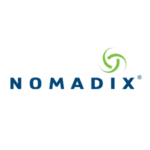 Room description layouts across multiple online channels (including OTA, metasearch and hotel websites) are regularly reviewed as part of h2c’s quality assurance process. With the objective to improve online conversion, h2c benchmarked the most common room description layouts and summarized best practices.
Room description layouts across multiple online channels (including OTA, metasearch and hotel websites) are regularly reviewed as part of h2c’s quality assurance process. With the objective to improve online conversion, h2c benchmarked the most common room description layouts and summarized best practices.
Our benchmark approach analyzed the three main sections of typical room descriptions.
- Highlights: Everything customers can read at a glance without clicking further
- Written Room Description: Flowing text including commonly requested details
- More Details: Usually available via pop-up or mouse-over
While written-only room descriptions belong to the past for OTAs, they can still be found on hotels’ websites. Today, hotel information must be concise, displaying room features via easy-to-understand icons and using bullet points for rapidly grasping all major accommodation facts. Mobile users especially will require this kind of display.
A key finding of h2c’s research revealed that the sequencing of amenities requires improvements on most websites. One example is a hotel website listing a shower (basic room feature) higher than a balcony. H2c’s recommendation is to find out what travelers appreciate most about your rooms e.g., by reviewing your guest reviews. These distinguishing room features should then find a place in the Highlights section.
As opposed to many OTAs which display maximum occupancy per room in their Highlights section, hotel websites usually do not feature this important information in a prominent position. Not only for resort hotels, but also for the growing number of apartment bookers, this information is very relevant—and they have become accustomed to it. Showing maximum occupancy at a top position also has the added benefit of clearly communicating how many children are allowed per room type, which saves a lot of time for a family booking.
Another major research finding shows that most hotel websites (and consequently also OTA websites) do not issue dedicated room descriptions for all room types. As a result, price differences remain unclear for customers and this can likely lead to a booking process break-off. Be creative and convince your guests to stay in a higher priced room because of its great features. Distinguishing room features can be anything from arts down to special bed linens.
Although our research has not come up with THE best converting room description, we highly recommend displaying unique features in the Highlights section and moving all standard features to the More Details section.
About the contributors
H2c’s hotel content optimization enables effective distribution across a multitude of platforms. Frequent hospitality and tourism research studies simplify global online travel complexities for our clients. H2c’s business performance benchmarks and distribution system specifications often identify upcoming technology trends, resulting in deep market insights. To read more interesting reports and articles, visit their website.



















